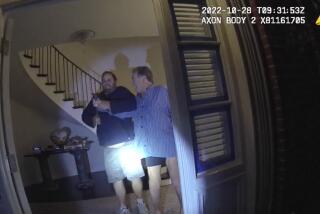Three anarchists get prison terms in Ohio bridge bomb plot

Three men who pleaded guilty to participating in a failed plot to bomb an Ohio bridge in April were sentenced Tuesday to federal prison.
The case involved a paid confidential informant who provided a dummy bomb and other help to the men as FBI agents listened in on their plans. The plot culminated with a failed detonation attempt on a bridge in Cuyahoga Valley National Park on the eve of leftist May Day protests in Chicago and elsewhere.
In the antigovernment plot outlined by prosecutors, the men had participated in the Occupy movement, but channeled their political frustration into planned violence.
Douglas L. Wright, 27, of Indianapolis, a drifter considered by prosecutors to be the ringleader -- and considered by others as troubled -- was sentenced to 11 1/2 years in federal prison after previously pleading guilty to charges of conspiracy to use weapons of mass destruction, attempted use of weapons of mass destruction, and malicious use of an explosive device to destroy property used in interstate commerce.
Brandon L. Baxter, 20, of Lakewood, Ohio, an alcohol and drug addict who friends defended as compassionate, was sentenced to nine years and nine months. Connor C. Stevens, 20, of Berea, Ohio, a poet who drifted between varying nooks of anarchist ideology before getting involved in the plot, was sentenced to eight years and one month.
All three apologized in court but will appeal sentences that were lengthened by a terrorism enhancement, according to the Associated Press. Once out of prison, they will remain on probation for life.
The case rankled leftists, who worried about law enforcement trying to entrap Occupy Wall Street protesters in phony terrorist plots.
Defense lawyers objected to what they called an overly aggressive confidential informant with a history of check fraud, arguing that the informant had pushed their clients into attempting a bomb plot they never would have tried on their own.
Prosecutors countered that the defendants had chosen the bridge as a target after months-long deliberation over anti-corporate and antigovernment targets. The government lawyers produced wiretap recordings of the defendants considering targets that would produce extensive property damage, occasionally hoping to minimize human loss, occasionally accepting potential deaths as OK.
According to the prosecution, after placing the bomb at the base of the bridge, Baxter asked, “How are we going to make sure there’s no cars on the bridge when it happens?”
“We can’t,” Wright said.
Baxter replied, “OK.”
The men then tried to blow up the bridge remotely from a nearby Applebee’s. The bomb was a fake, so it never detonated.
“In a calculated fashion, these three defendants identified a viable target, purchased what they believed to be military-grade explosives, and attached those explosives to that target,” FBI Special Agent in Charge Stephen D. Anthony said in a statement. “Not until they were safely miles away enjoying a meal did they casually attempt to remotely detonate the device, believing they were causing significant damage to the bridge, all in the hopes of furthering their ideological views.”
Another defendant, Anthony Hayne, 35, had previously pleaded guilty to the plot in exchange for his testimony against his cohorts, and is scheduled to be sentenced Wednesday. The fifth defendant, Joshua Stafford, 23, of Cleveland, was being evaluated to see whether he was mentally fit enough to stand trial.
matt.pearce@latimes.com
Twitter: @mattdpearce
More to Read
Sign up for Essential California
The most important California stories and recommendations in your inbox every morning.
You may occasionally receive promotional content from the Los Angeles Times.










